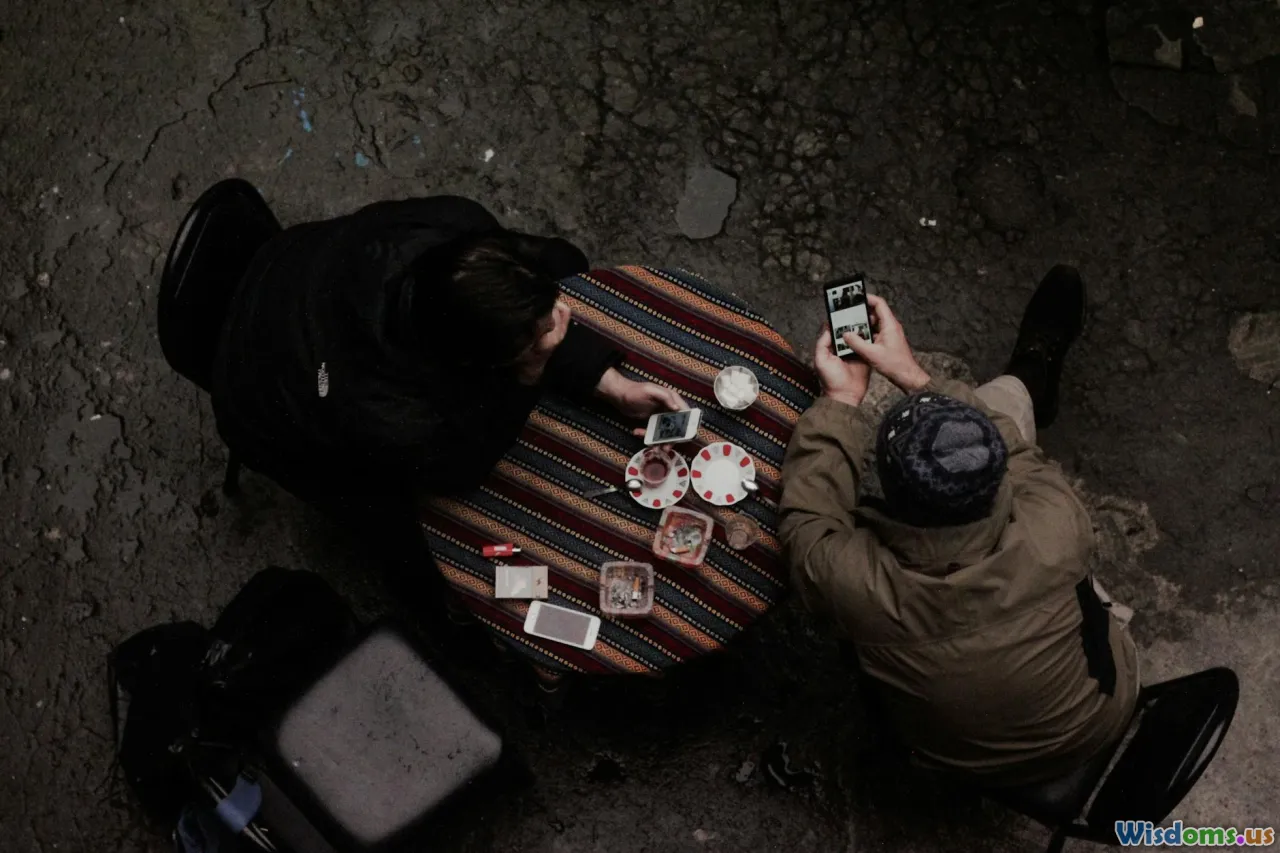
Do Smartphones Enhance or Erode Local Cultural Traditions
8 min read Explore how smartphones impact local cultural traditions—bridging gaps or dimming heritage? (0 Reviews)
Do Smartphones Enhance or Erode Local Cultural Traditions?
In an age dominated by constant connectivity and rapid technological advances, smartphones have become more than just communication devices—they play an influential role in shaping culture itself. Across the globe, local cultural traditions are either being revitalized or diluted under the bright screen glow of smartphones. But do these handheld devices enhance or erode the fabric of our cultural heritage? This exploration takes you into how smartphones impact local culture, backed by real-world insights, examples, and expert perspectives.
Introduction: The Cultural Crossroads of the Digital Era
Imagine a vibrant rural festival in Southeast Asia where traditional dance, rituals, and attire pass from generation to generation. Now bring into this scene the omnipresent smartphone capturing, streaming, and sharing moments instantly to the world. Smartphones serve as both a magnifying glass and disruptor. On one hand, they provide tools for preserving and sharing intangible cultural practices; on the other, they expose communities to homogenized global trends that risk diluting unique identities.
Understanding this dichotomy is crucial because local cultures not only enrich societies but also anchor identities, histories, and collective memory. As smartphones proliferate—there were an estimated 6.8 billion smartphone subscriptions worldwide in 2023, according to GSMA Intelligence—decoding their cultural influence is timely and necessary.
Smartphones as Catalysts for Cultural Preservation
Digital Archives and Storytelling
One significant way smartphones bolster local traditions is by empowering communities to document and archive their cultural expressions instantly. Apps enable recording traditional music, oral histories, and rituals. For example, indigenous groups in the Amazon basin use smartphones to capture stories from elders, creating digital repositories that can outlive oral transmissions vulnerable to disruption.
Additionally, platforms like YouTube, TikTok, and Instagram provide avenues for traditional artists and cultural practitioners to showcase their crafts to a broader audience. The Maori community in New Zealand has creatively employed social media to share the haka dance sequences, fostering both pride and global appreciation.
Language Revitalization
Many local languages are endangered. Smartphones help preserve them by supporting apps that teach indigenous languages through interactive methods or assist in everyday usage through translation tools. Take the language app Lekoteko, aimed at revitalizing the Basque language, benefiting from smartphone accessibility.
Educational Outreach and Cultural Exchange
Through affordable smartphone ownership in developing regions, educational content tied to local culture becomes more accessible. Virtual reality (VR) and augmented reality (AR) go beyond textbooks, immersing youth in their heritage interactively. For instance, India's Digital Shakti initiative promotes regional folk art via mobile technology to younger generations to keep traditions alive.
Smartphones as Agents of Cultural Erosion
Cultural Homogenization and Global Trends
Despite preservation efforts, smartphones risk diluting traditions by amplifying dominant global trends. Globally popular apps often prioritize mainstream content, overshadowing local narratives. This effect accelerates cultural homogenization where youth gravitate toward universal memes, fast food culture, and international slang, diminishing locally distinct practices.
A study by the International Journal of Cultural Studies (2022) highlighted how teenagers in rural Morocco shifted their music preferences almost completely toward Western pop, replacing traditional Chaabi music within five years of smartphone adoption.
Shifts in Social Interaction
The smartphone era often reshapes interaction patterns from face-to-face communal events to isolated screen-time. This nuanced isolation can weaken the social rituals essential to cultural transmission—festivals become events recorded for social media rather than collective experience.
For example, in parts of Japan, the overuse of smartphones during cultural ceremonies has prompted elders to lament the loss of genuine participation and the eroding understanding of subtle ritual meanings.
Commercialization and Exploitation of Traditions
Smartphones also bring commercial pressure, commodifying cultural icons for tourism or viral content. Some traditions become superficial performances stripped of depth, tailored to social media aesthetics rather than authentic practice. This distortion concerns anthropologists who warn against the reduction of culture to merchandise.
Navigating the Balance: Strategies and Innovations
Community-Led Digital Initiatives
Successful preservation hinges on communities leading how smartphones are used. In Canada, the Inuit have developed the Inuit Tapiriit Kanatami mobile initiatives recording indigenous laws and cultural customs controlled by the community itself, blending tradition with modern technology ethically.
Education Integrating Tradition and Technology
Curriculums that incorporate smartphones as tools, not distractions, promote conscious cultural engagement. South Korea’s Hanok-style digital tours utilize smartphone apps to educate about traditional architecture with immersive content, marrying technology with heritage appreciation.
Policy and Digital Rights Advocacy
Governments and NGOs can foster frameworks that encourage smartphones benefiting culture without commodification or cultural loss. UNESCO’s Mobile Learning Week consistently emphasizes mobile tech’s role in safeguarding intangible cultural heritage.
Conclusion: Smartphones—A Double-Edged Sword for Local Culture
Smartphones undeniably wield tremendous influence over local cultural traditions. Far from a simple erosion or enhancement story, their impact is complex and contingent on how communities harness technology. While there's a real risk of cultural dilution via globalized digital content, the potential of smartphones to empower preservation, education, and cultural pride is equally potent.
As users, educators, policymakers, and cultural advocates, it is imperative to navigate this duality thoughtfully. Encouraging community-driven digital initiatives, mindful cultural representation, and education that values both modernity and tradition can ensure smartphones remain a tool of cultural empowerment rather than erasure.
Ultimately, smartphones do not dictate the fate of local cultures—people do. Harnessing these devices thoughtfully might well define whether they become bridges to cultural survival or walls that divide us from our rich heritage.
References:
- GSMA Intelligence Mobile Economy Report, 2023
- "Globalization and Cultural Change: The Role of Smartphones," International Journal of Cultural Studies, 2022
- UNESCO Mobile Learning Week, 2023 Proceedings
- Inuit Tapiriit Kanatami Official Website
- "Cultural Preservation and Technology Use among Indigenous Peoples," Journal of Digital Anthropology, 2021
- South Korea Digital Heritage Tourism Projects
Author's Note: This article encourages reflection on smart, culturally sensitive use of mobile technology—vital as we advance deeper into the digital age.
Rate the Post
User Reviews
Popular Posts




















